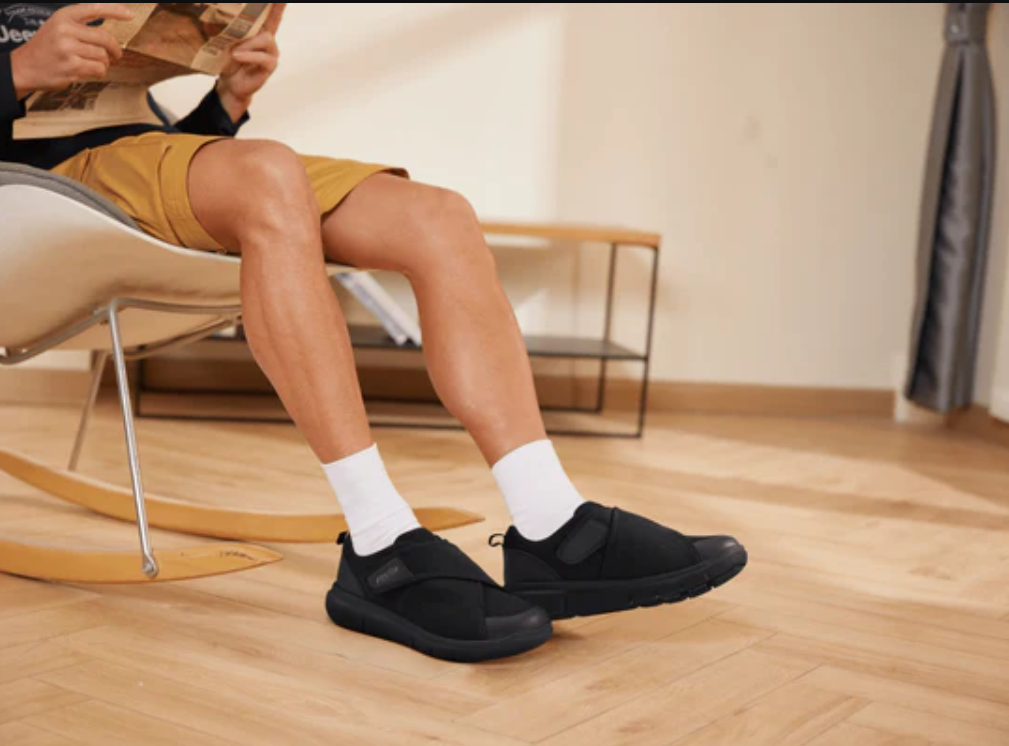Diabetes can lead to foot complications such as neuropathy, poor circulation, and an increased risk of infections. Wearing the right shoes is essential for preventing foot problems and ensuring comfort and support. In this guide, we’ll explore the best shoes for diabetic feet, key features to look for, and tips for choosing the perfect pair.
Why Diabetics Need Special Shoes
People with diabetes are more prone to foot injuries due to reduced sensation and slower healing. The right shoes help in the following ways:
- Reduce pressure points to prevent blisters and ulcers.
- Improve circulation with a comfortable, non-restrictive fit.
- Protect against injuries by offering extra cushioning and a seamless interior.
- Provide stability and support to promote better walking posture and reduce strain on the feet.
Key Features to Look for in Diabetic Shoes
1. Extra Depth and Wide Toe Box
Shoes with extra depth allow room for swollen feet, custom orthotics, and proper blood flow. A wide toe box prevents squeezing and reduces pressure on sensitive areas.
2. Soft, Seamless Interior
Seamless linings prevent friction and irritation, reducing the risk of blisters and ulcers, especially for those with neuropathy.
3. Cushioned and Supportive Insoles
A well-cushioned insole with arch support helps absorb shock and provides relief for foot pain. Look for shoes with removable insoles so you can use custom orthotics if needed.
4. Slip-Resistant Outsole
A rubber outsole with good traction helps prevent slips and falls, which can be dangerous for diabetics.
5. Adjustable Closures
Velcro straps or easy-to-use laces allow for a customized fit, making it easier to adjust for swelling throughout the day.
6. Breathable Materials
Shoes made from mesh, leather, or other breathable materials help keep feet cool and dry, reducing the risk of infections.
Top Shoes for Diabetic Feet
1. FitVille Rebound Core
- Wide toe box and extra depth for comfort.
- Dual-density EVA midsole for superior shock absorption.
- Slip-resistant rubber outsole for stability.
- U-shaped heel cup for better alignment.
2. Orthofeet Diabetic Sneakers
- Seamless interior with soft, padded lining.
- Ergonomic sole with arch support.
- Wide and extra-wide options for a better fit.
- Adjustable straps for easy wear.
3. New Balance 928v3
- ROLLBAR technology for stability and motion control.
- Plush cushioning with removable insoles.
- Wide toe box and breathable mesh upper.
- Durable rubber outsole with excellent traction.
4. Dr. Comfort William-X Stretch Shoe
- Extra-depth design for swollen feet and orthotics.
- Seamless design to prevent irritation.
- Lightweight construction for all-day wear.
- Stretchable upper for flexible comfort.
5. Skechers GOwalk Arch Fit
- Podiatrist-certified arch support.
- Slip-on design for easy use.
- Lightweight cushioning for shock absorption.
- Breathable mesh upper to keep feet cool.
How to Choose the Right Diabetic Shoes
1. Get Properly Measured
Since diabetes can affect foot size and shape, measure your feet regularly and choose shoes that fit well without being too tight.
2. Prioritize Comfort Over Style
While appearance is important, focus on features that provide comfort and protection first.
3. Check for Certification
Look for shoes labeled as diabetic-friendly or approved by podiatrists for optimal foot health.
4. Wear the Right Socks
Pair your shoes with moisture-wicking, seamless socks to reduce friction and keep feet dry.
5. Replace Shoes Regularly
Diabetic shoes wear out over time, losing their support and cushioning. Replace them as needed to maintain foot health.
Final Thoughts
Wearing the right shoes is essential for managing diabetic foot health. Whether you need extra cushioning, stability, or protection, brands like FitVille, Orthofeet, and New Balance offer excellent options. Prioritize comfort, support, and safety to keep your feet healthy and pain-free.





Comments